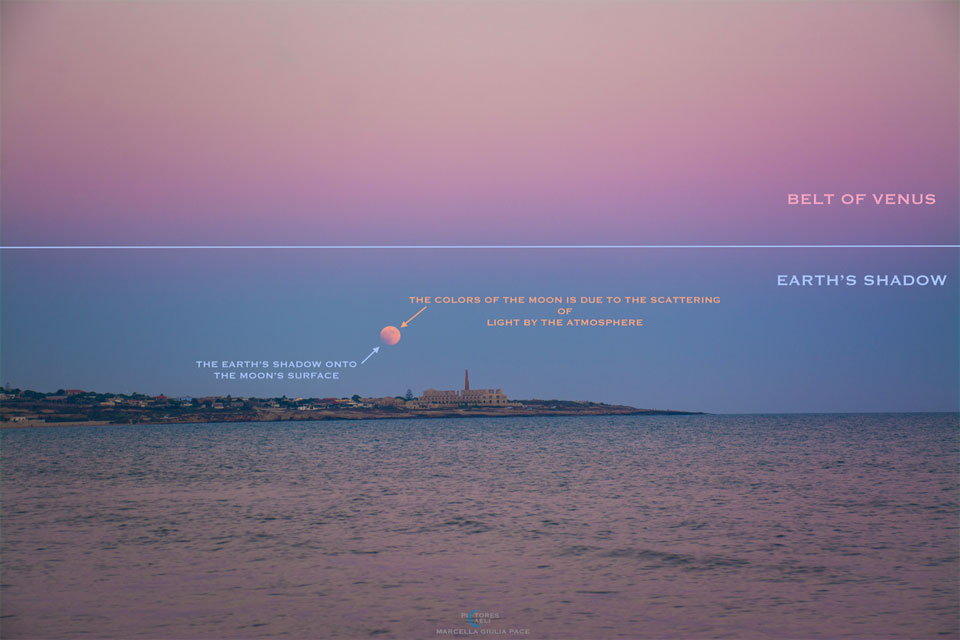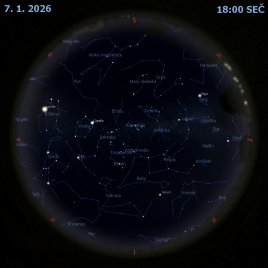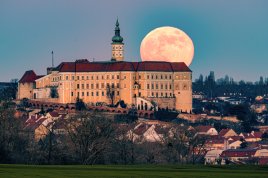Stíny Země

Uznání a copyright: Marcella Giulia Pace
Dokážete na dnešním snímku najít dva zemské stíny? Je to trochu složitější. První stín najdete tak, že si uvědomíte, že horní část atmosféry je růžová a spodní část modrá. Je to proto, že horní polovina je vystavena přímému slunečnímu záření, zatímco spodní část nikoli. Fialová oblast mezi nimi je známá jako Venušin pás, i když Venuše může být vidět pouze na druhé straně oblohy v blízkosti Slunce. Modrou barvu spodních vrstev atmosféry způsobuje to, že Země brání slunečnímu světlu a vytváří tak zemský stín číslo 1. Kde se nyní nachází druhý zemský stín? Podívejte se na Měsíc. Všimli jste si něčeho neobvyklého v levé dolní části? Tato oblast se zdá být neobvykle tmavá, protože se nachází ve stínu Země, který vytváří zemský stín číslo 2. V tomto případě se jedná o stín, který se nachází v blízkosti Země. Měsíc byl totiž zachycen během zatmění Měsíce, abychom byli přesní. Pečlivě načasovaný snímek byl pořízen v červenci 2018 v Sampieri na italské Sicílii.
Seznam odkazů v popisu
- NASA: What is Earth’s atmosphere?
- APOD: 2022-07-27 Krepuskulární paprsky Měsíce nad Dánskem
- APOD: 2010-04-04 Venušin pás nad Měsíčním údolím
- Wikipedia: Belt_of_Venus
- NASA: Sun - Our Star
- APOD: 2019-10-11 Planeta Země v modré hodince
- APOD: 2022-06-12 Najděte Člověka na Měsíci
- InterMountainPet.com: Foto: Tři psi :-)
- APOD: 2021-12-01 Krvavý Měsíc s modrým pruhem
- NASA: Earth's Moon
- APOD: 2018-08-02 Zatmění nad Zálivem básníků
- Youtu.be: Sampieri 2017
- Wikipedia: Italy
- Wikipedia: Sicily
NASA Official: Phillip Newman Specific rights apply. NASA Web Privacy Policy and Important Notices
A service of: ASD at NASA / GSFC & Michigan Tech. U.
Odkaz na originální APOD


